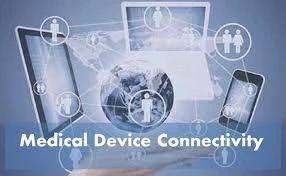In the fast-paced world of modern healthcare, efficiency and data-driven insights have become paramount. Enter medical device connectivity, a cutting-edge technology that has the potential to unlock new levels of efficiency and provide invaluable data insights for healthcare providers.
One of the most significant advantages of medical device connectivity is its ability to automate data collection. Previously, healthcare professionals had to manually record information from various medical devices, leading to potential errors and wasted time. With connectivity in place, data from devices such as heart rate monitors, infusion pumps, and glucose meters is automatically transmitted to electronic health records (EHR) systems, saving time and ensuring accuracy.
The seamless integration of medical devices also allows for real-time monitoring of patients' conditions. In critical care settings, this can be a life-saving feature. For instance, in an intensive care unit, medical staff can monitor multiple patients simultaneously, with any abnormal readings triggering immediate alerts. This rapid response capability can prevent adverse events and improve patient outcomes.
Another significant benefit of medical device connectivity is the wealth of data it generates. By aggregating data from numerous patients and devices, healthcare providers can gain valuable insights into trends, patterns, and treatment effectiveness. This data-driven approach empowers evidence-based decision-making, leading to more personalized and effective patient care.
However, with these technological advancements come challenges that need to be addressed. Interoperability remains a key issue, as different medical devices and EHR systems may use proprietary protocols, hindering seamless integration. Standardization efforts are essential to ensure that medical devices can communicate with each other and share data efficiently.
In conclusion, medical device connectivity holds the key to unlocking efficiency and data insights in the healthcare industry. By automating data collection, enabling real-time monitoring, and leveraging the power of data analytics, this technology has the potential to revolutionize patient care and elevate the overall quality of healthcare services.


